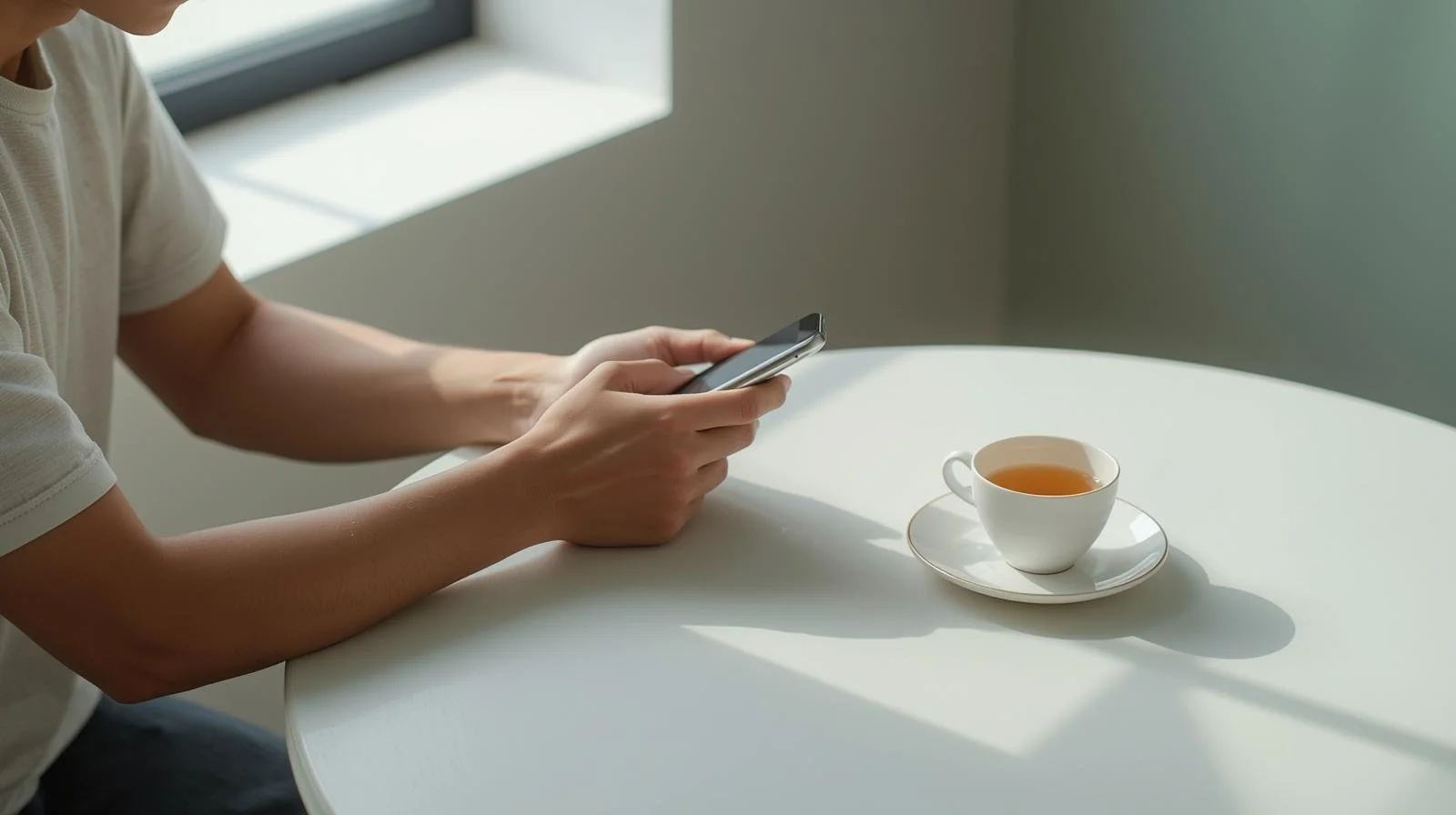Digital Minimalism for Realists: A Calm-Phone Blueprint
By Marco Liu | Digital Wellbeing Researcher
When the Phone Owns You Back
You reach for your phone to check one message, and thirty minutes vanish. You do not remember what you read, only that you feel scattered and slightly hollow. That’s not lack of discipline — it’s design.
Phones are built to hold attention, not protect it. Every vibration and icon is a psychological hook. Digital minimalism is not about deleting every app. It is about learning to use technology consciously, without letting it use you.
Why “Just Put It Down” Doesn’t Work
Telling people to stop checking their phones is like telling swimmers to stop getting wet. Our devices are tied to work, family, and social life. The goal is not avoidance. It is redesign.
Behavioral science calls it choice architecture — creating environments that support the behaviors you actually want. You can’t outwillpower your phone’s design, but you can outsmart it.
The Psychology of Digital Overload
Each ping of your phone releases a burst of dopamine — the same neurotransmitter that drives motivation and reward. Over time, your brain links uncertainty (“Maybe this notification will be important”) with reward.
This variable reinforcement loop is powerful because it thrives on inconsistency. The more unpredictable the reward, the harder it is to stop checking. That is why even meaningless alerts keep you hooked.
How to Build a Calm-Phone System
1. Curate, Don’t Delete
Start by identifying your “core apps” — the ones that genuinely add value to your day. Keep only what supports work, relationships, and learning. Everything else moves to a secondary screen or gets removed entirely.
2. Redesign Your Home Screen
Your home screen should feel calm, not crowded. Remove social media icons and group tools by function: communication, focus, navigation. Consider a neutral wallpaper instead of bright visuals that demand attention.
3. Silence the Slot Machine
Turn off nonessential notifications. Leave on only calls, messages, and reminders. Every alert you silence is reclaimed peace of mind.
4. Use the “Dock Detox” Rule
Only keep your four most important apps in your dock. For many people, that’s phone, messages, maps, and camera. Every other app requires an extra swipe — a friction that reminds you to think before tapping.
5. Create Screen-Free Zones
Pick one daily activity where your phone never joins you: meals, walks, or your first 20 minutes after waking. This resets your nervous system and rebuilds tolerance for stillness.
How a Calm Phone Changes Your Mind
Within a week, you’ll notice small shifts:
Less phantom buzzing.
More focus during work.
Shorter scroll sessions that actually feel satisfying.
Lower background stress.
The goal is not total abstinence but digital peace — using your phone with intention, not compulsion.
Conclusion
Minimalism is not about less; it is about clarity. A calm phone becomes a quiet ally instead of a noisy master. Technology should serve your goals, not shape them.
When you redesign your digital environment, you redesign your mind’s environment too.
Author Bio
Marco Liu is a digital wellbeing researcher and UX consultant who studies how interface design affects attention, mood, and daily focus. His work explores practical ways to live well in a hyperconnected world.
*Guest contributions reflect the personal experiences and perspectives of their authors. While every piece is reviewed for quality and respect, the ideas shared may differ from the views of Josh Dolin. Readers are encouraged to take what resonates and leave the rest.

